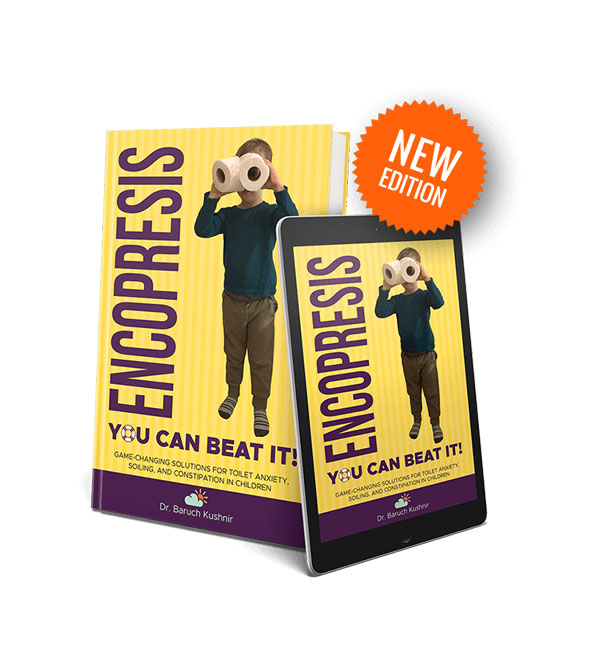
Encopresis and Constipation in Children
Encopresis and Constipation in Children Soiling, stool soiling, or fecal soiling refers to the leakage of stool that a child cannot control. This condition happens
Pediatric constipation is more widely common among children than many parents think, and it can be mainly associated with fecal soiling or encopresis. In the case of children who experience prolonged constipation and soiling, performing a preliminary bowel cleanout before commencing behavioral therapy is highly recommended.
It is important to note that deliberate withholding of stool (for different reasons discussed in the first few chapters of the book) is not the only reason that causes persistent constipation; a carb-heavy diet that doesn’t contain sufficient dietary fiber is another common reason that can be responsible for the issue. In fact, in most cases, the problem is known to have stemmed from a combination of both these reasons. Therefore, before beginning and/or during behavioral therapy for the child, Dr. Kushnir recommends a few important procedures that need to be completed – preliminary cleanout, well-balanced nutrition, and long-term use of stool softeners.
Preliminary cleanout before commencing behavioral intervention can be done in two ways – using glycerin suppositories (solid or liquid) or using micro-enemas.
A wide range of pediatric glycerin suppositories can be found in pharmacies. Of course, it is vital that you consult with your pediatrician to choose the right one for your child, and regardless of the product you choose, you just have to follow the instructions provided in the medication package insert to get the procedure done.
Using micro-enemas has been around for several years as one of the effective methods for treating constipation. While physicians around the world recommend numerous methods for using micro-enema, the procedure that Dr. Kushnir recommends, based on his decades of experience working with children, is short and effective.
The step-by-step guide to using micro-enema for preliminary cleanout as recommended by Dr. Kushnir is as follows:
Let’s face it, this is not an attractive method, and not all parents are up for it; but, it is a short and highly effective procedure that has to be done only once for a full cleanout. You can most certainly talk to your child’s pediatrician to come up with the best cleanout method for him/her, and remember to get clear instructions for performing the procedure as well.
Your child’s diet also plays a huge role in his/her fecal soiling issue. Children always have trouble eating vegetables, and their diet mostly tends to have too many carbs and too few sources of fiber. This makes it hard for them to poop properly and regularly, and also aggravates their constipation. So, the best and straightforward way to work around this issue is to make changes to your kid’s regular diet by introducing more vegetables and fiber-rich foods in it.
But, it is not easy to make kids eat vegetables and all the other good stuff, and it requires a lot of time and effort from your side to get them used to their new menu. Meanwhile, you can start using stool softeners to help ease your child’s bowel movements, some of the most popular of which are Polyethylene Glycol 3350. Though these comprise the same material, they carry different names in different parts of the world (PegLAX, MiraLAX, and NormaLAX).
These stool softeners are widely recommended by physicians for children with pooping problems, as they help soften their stool by it absorb more fluids, thereby making the child’s bowel movements easier. Don’t be alarmed if your child’s soiling and constipation problems don’t clear out after using stool softeners; Dr. Kushnir offers some great pointers in this chapter that can help use the softeners effectively.

Encopresis and Constipation in Children Soiling, stool soiling, or fecal soiling refers to the leakage of stool that a child cannot control. This condition happens

Frequent Soiling: Causes and Treatment Frequent soiling, fecal incontinence, or encopresis is a condition when a child, typically between 5 and 9 years of age,

Toddler afraid to poop in the toilet? It could be Toilet Anxiety So, you have started toilet training your two and a half-year-old, and things

Speed up the process of progressing from infant diapers to toilet chairs or toilet seats with The Magic Bowl App.

The Magic Bowl – potty training made easy Dr. Baruch Kushnir turns potty training into a fun, effective, and most importantly, short experience. Order Now

Encopresis – you can beat it! Game-changing solutions for Toilet Anxiety, Soiling, and Constipation in Children Order Now About the book How to eliminate poop